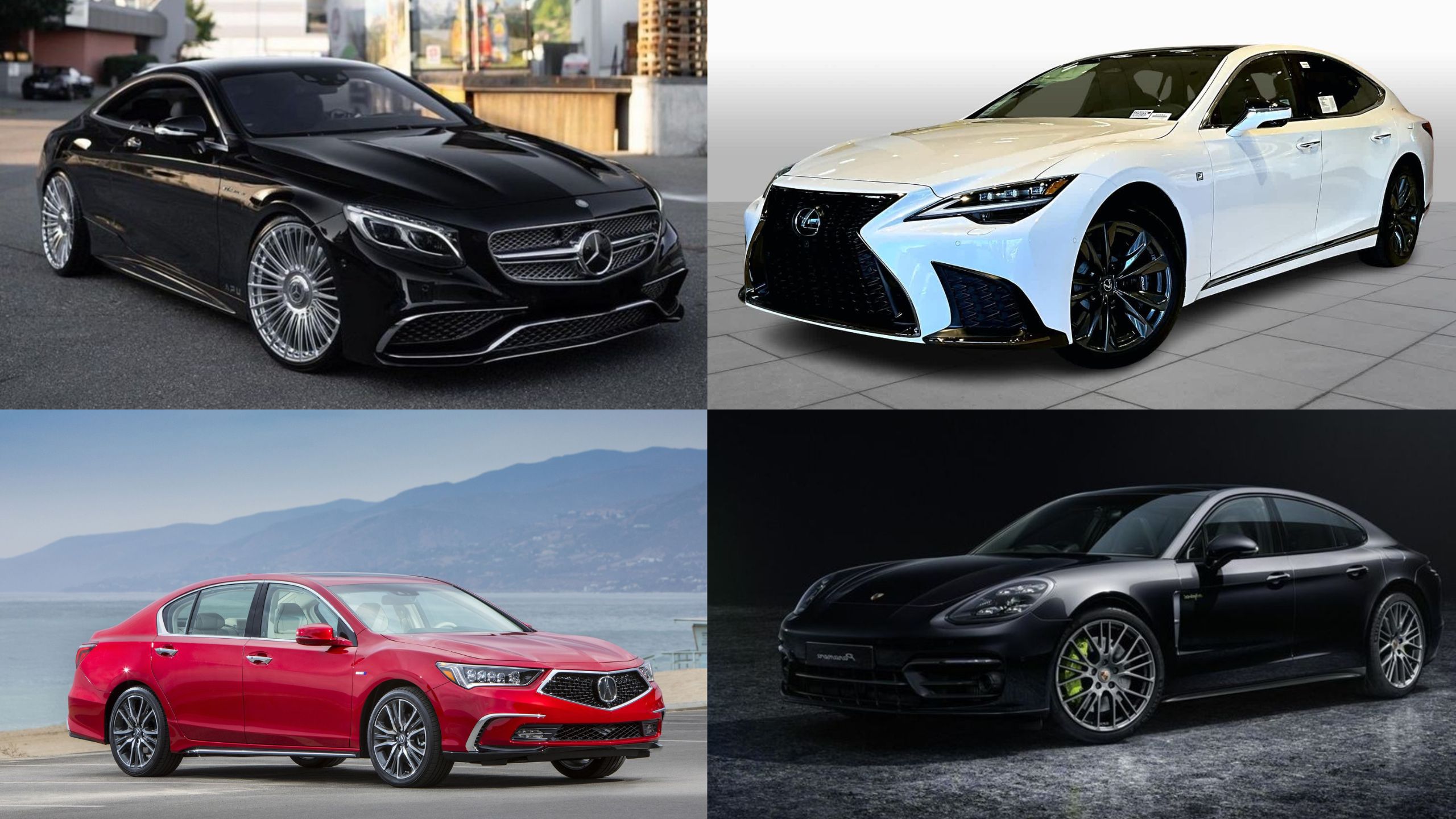In luxury and performance automobiles, electrical reliability is a critical factor that separates exceptional engineering from mere aesthetic appeal.
Modern high-end vehicles are complex machines packed with sophisticated electronic systems, from advanced infotainment interfaces to intricate driver assistance technologies.
While cutting-edge features enhance driving experiences, they also introduce potential points of failure that can lead to costly repairs and frustrating downtime.
This comprehensive guide explores twelve premium automotive models renowned for their exceptional electrical system durability and long-term reliability.
These vehicles represent the pinnacle of automotive engineering, demonstrating that high-end doesn’t necessarily mean high maintenance.
By prioritizing robust electrical architectures, advanced diagnostic systems, and quality component selection, these manufacturers have set new standards in vehicular dependability.
Whether you’re a luxury car enthusiast, a potential buyer seeking a reliable investment, or simply interested in automotive technology, this guide offers invaluable insights into the most electrically dependable high-end vehicles on the market.
1. Lexus LS
The Lexus LS stands as a paragon of electrical reliability, setting the gold standard for luxury sedan dependability.
Toyota’s premium brand has meticulously engineered this flagship model to minimize electrical complications through rigorous testing and exceptional component quality.
The LS’s electrical system is a testament to Japanese precision engineering, featuring a robust architecture that has consistently ranked at the top of reliability surveys for over two decades.
Central to the LS’s electrical prowess is its conservative approach to technology implementation.
Unlike many competitors that rush to integrate bleeding-edge features, Lexus adopts a measured strategy of thorough validation before introducing new electrical components.
The vehicle’s electrical system undergoes extensive stress testing in extreme conditions, from scorching desert heat to freezing arctic temperatures, ensuring consistent performance across diverse environments.
The infotainment and connectivity systems are particularly noteworthy for their stability. Lexus utilizes a proprietary electrical architecture that minimizes potential failure points, with carefully shielded wiring harnesses and high-quality connectors that resist corrosion and electrical interference.
The brand’s commitment to quality is evident in its use of premium-grade electrical components sourced from top-tier manufacturers.
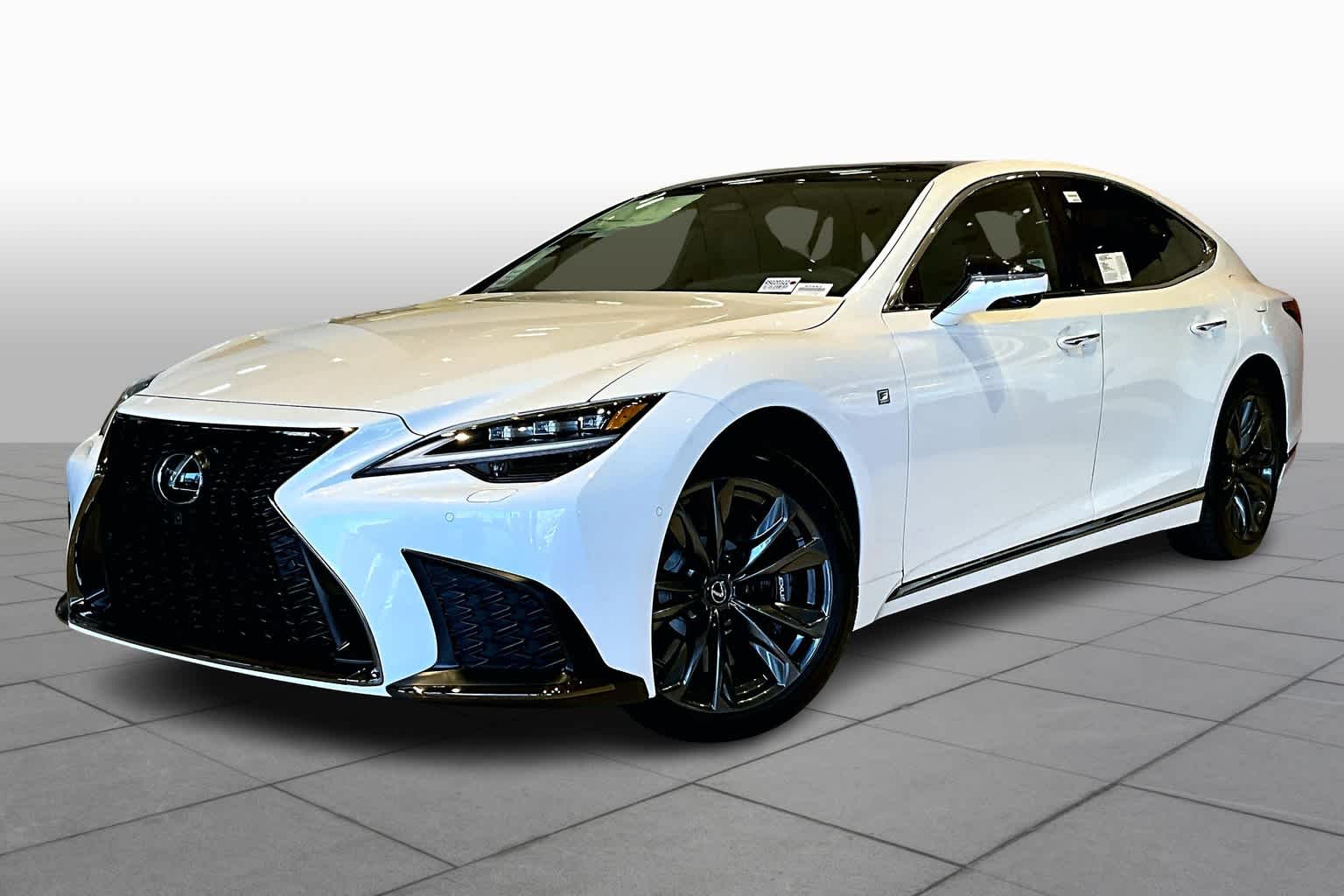
Moreover, the LS features advanced diagnostic capabilities that proactively identify potential electrical issues before they become critical problems.
The onboard computer system continuously monitors electrical subsystems, providing early warnings and detailed error reporting that allows for preemptive maintenance.
This predictive approach significantly reduces the likelihood of unexpected electrical failures. Ownership experiences consistently highlight the LS’s electrical reliability.
Consumer reports and long-term reliability studies have repeatedly ranked the Lexus LS among the most dependable luxury vehicles.
Owners report minimal electrical issues even after several years and extensive mileage, with many vehicles maintaining near-perfect electrical system performance well beyond the typical warranty period.
The combination of conservative technological implementation, rigorous testing, high-quality components, and advanced diagnostic systems makes the Lexus LS a benchmark for electrical reliability in the luxury automotive segment.
It represents not just a mode of transportation, but a carefully engineered marvel of automotive electrical excellence.
2. Mercedes-Benz S-Class
The Mercedes-Benz S-Class represents the pinnacle of German engineering, particularly when it comes to electrical system reliability and innovation.
As the technological flagship of the Mercedes-Benz lineup, the S-Class introduces cutting-edge electrical technologies while maintaining an impressive track record of system stability and long-term performance.
Mercedes-Benz has invested heavily in developing a sophisticated electrical architecture that balances advanced functionality with robust reliability.
The S-Class features a complex network of over 100 electronic control units that communicate seamlessly through a high-speed CAN (Controller Area Network) bus system.
This advanced infrastructure allows for sophisticated integration of electrical systems while minimizing potential interference and failure points.
The vehicle’s electrical components undergo an extraordinary validation process. Mercedes-Benz subjects each electrical system to more than 600 different test scenarios, simulating everything from extreme temperature variations to constant vibration and electromagnetic interference.
This comprehensive testing ensures that electrical components can withstand the most demanding real-world conditions.

Innovative features like the MBUX (Mercedes-Benz User Experience) infotainment system demonstrate the brand’s commitment to both technological advancement and reliability.
The system utilizes advanced artificial intelligence to learn driver preferences while maintaining exceptional stability.
Redundant electrical pathways and fail-safe mechanisms ensure that even if one electrical subsystem encounters an issue, alternative systems can maintain critical functionality.
The S-Class incorporates advanced thermal management systems that protect electrical components from temperature-related stress.
Sophisticated cooling and insulation techniques prevent electrical system degradation, a common issue in complex luxury vehicles.
This approach extends the lifespan of sensitive electronic modules and reduces the likelihood of unexpected failures.
Mercedes-Benz has also implemented predictive maintenance technologies that continuously monitor electrical system health.
The onboard diagnostic system can detect potential issues before they become critical, allowing for proactive maintenance. This approach has significantly improved the long-term electrical reliability of the S-Class.
Owners and automotive experts consistently praise the S-Class for its electrical system dependability.
While the vehicle incorporates more advanced technologies than many competitors, its meticulous engineering ensures these systems operate with remarkable consistency and minimal complications.
3. Porsche Panamera
The Porsche Panamera exemplifies electrical reliability through a combination of precise German engineering and a performance-oriented approach to automotive electronics.
As Porsche’s luxury four-door sports car, the Panamera demonstrates that high-performance vehicles can maintain exceptional electrical system integrity without compromising on advanced technological features.
Porsche’s electrical engineering philosophy centers on simplicity and robust design. Unlike some luxury manufacturers that incorporate complex, potentially unreliable electrical systems, Porsche focuses on creating streamlined, well-tested electrical architectures.
Each electrical component is selected and integrated with meticulous attention to quality and long-term performance.
The Panamera’s electrical system is a marvel of efficient design, featuring carefully shielded wiring harnesses and high-quality connectors that resist environmental stressors.
Porsche utilizes aerospace-grade electrical components that can withstand extreme temperatures, vibrations, and electromagnetic interference. This approach ensures consistent performance across diverse driving conditions.

Advanced diagnostic capabilities are integrated throughout the vehicle’s electrical system. The onboard computer continuously monitors electrical subsystems, providing real-time data and early warning indicators for potential issues.
This proactive approach allows for immediate detection and resolution of emerging electrical complications, preventing more significant problems from developing.
Porsche’s commitment to electrical reliability extends to its innovative hybrid models. The Panamera E-Hybrid demonstrates that electrification can be implemented without compromising system stability.
Advanced battery management systems and carefully engineered power distribution networks ensure consistent electrical performance across both traditional and hybrid powertrain configurations.
The infotainment and connectivity systems represent another highlight of the Panamera’s electrical excellence.
Porsche Communication Management (PCM) offers a sophisticated yet reliable interface that integrates seamlessly with the vehicle’s electrical architecture.
The system provides advanced functionality while maintaining exceptional stability and minimal failure rates.
Long-term ownership experiences consistently validate the Panamera’s electrical reliability. Automotive reliability studies have repeatedly recognized Porsche for its exceptional electrical system performance, with the Panamera receiving particular praise for its consistent and dependable electrical components.
4. Acura RLX
The Acura RLX stands as a testament to Honda’s legendary engineering reliability, bringing Japanese precision to the luxury sedan market with an exceptional electrical system that sets new standards for dependability.
As the flagship sedan of Acura’s lineup, the RLX demonstrates how advanced technological integration can coexist with remarkable electrical system stability.
Honda’s approach to electrical engineering focuses on simplicity, quality, and comprehensive testing. The RLX utilizes a meticulously designed electrical architecture that minimizes potential failure points while maximizing system efficiency.
Each electrical component undergoes rigorous screening, ensuring only the highest-quality parts are integrated into the vehicle’s complex network of electronic systems.
The vehicle’s advanced hybrid powertrain, particularly in the Sport Hybrid model, showcases Acura’s expertise in electrical system design.
Unlike many luxury hybrids that struggle with electrical complexity, the RLX Sport Hybrid features a sophisticated yet robust electrical management system.
The hybrid powertrain’s electrical components are engineered with multiple redundancy layers, providing exceptional reliability and performance.
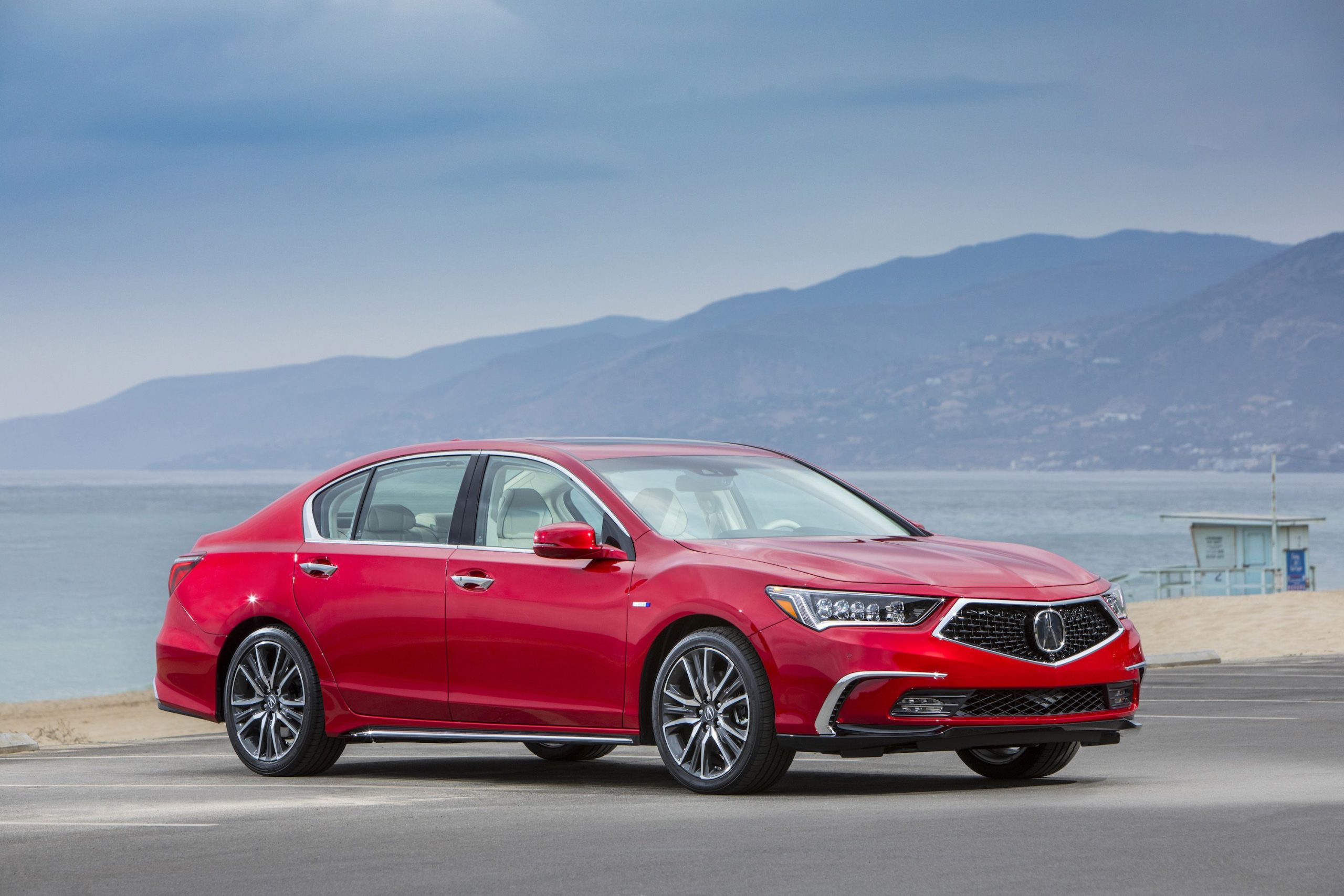
Acura’s electrical diagnostic capabilities are particularly noteworthy. The RLX features an advanced onboard computer system that continuously monitors electrical subsystems, providing real-time data and predictive maintenance alerts.
This proactive approach allows owners to address potential issues before they escalate, significantly reducing the likelihood of unexpected electrical failures.
The infotainment and connectivity systems represent another highlight of the RLX’s electrical excellence. Acura’s precision-engineered interface combines advanced functionality with remarkable stability.
The system integrates seamlessly with modern smartphones and provides comprehensive connectivity options without compromising electrical system integrity.
Thermal management plays a crucial role in the RLX’s electrical reliability. Advanced cooling systems protect sensitive electronic components from temperature-related stress, extending the lifespan of critical electrical modules.
This approach prevents performance degradation and reduces the potential for electrical system complications.
Consumer reports and long-term reliability studies consistently recognize the Acura RLX for its exceptional electrical system performance.
Owners report minimal electrical issues, with many vehicles maintaining near-perfect electrical functionality well beyond the standard warranty period.
The combination of Honda’s engineering expertise and a conservative approach to technological implementation ensures the RLX remains a benchmark of electrical reliability.
The vehicle’s electrical system represents a perfect balance between advanced technological features and dependable performance, reflecting Acura’s commitment to creating luxury vehicles that prioritize both innovation and long-term reliability.
Also Read: 10 Classic Car Engines Still Running After 50 Years
5. BMW 7 Series
The BMW 7 Series epitomizes German engineering excellence, particularly in its approach to electrical system design and reliability.
As the flagship luxury sedan of the BMW lineup, the 7 Series integrates cutting-edge technological innovations with a remarkable commitment to electrical system stability and long-term performance.
BMW’s electrical engineering philosophy centers on creating a sophisticated yet robust electrical architecture that can support advanced features without compromising reliability.
The 7 Series features a complex network of electronic control units that communicate through an advanced high-speed data bus system, allowing for seamless integration of multiple electrical subsystems.
The vehicle’s electrical components undergo an extraordinary validation process that goes far beyond industry standards.
BMW subjects each electrical system to hundreds of rigorous test scenarios, simulating extreme environmental conditions, constant vibration, and complex electromagnetic interactions. This comprehensive testing ensures that electrical components can withstand the most demanding real-world challenges.
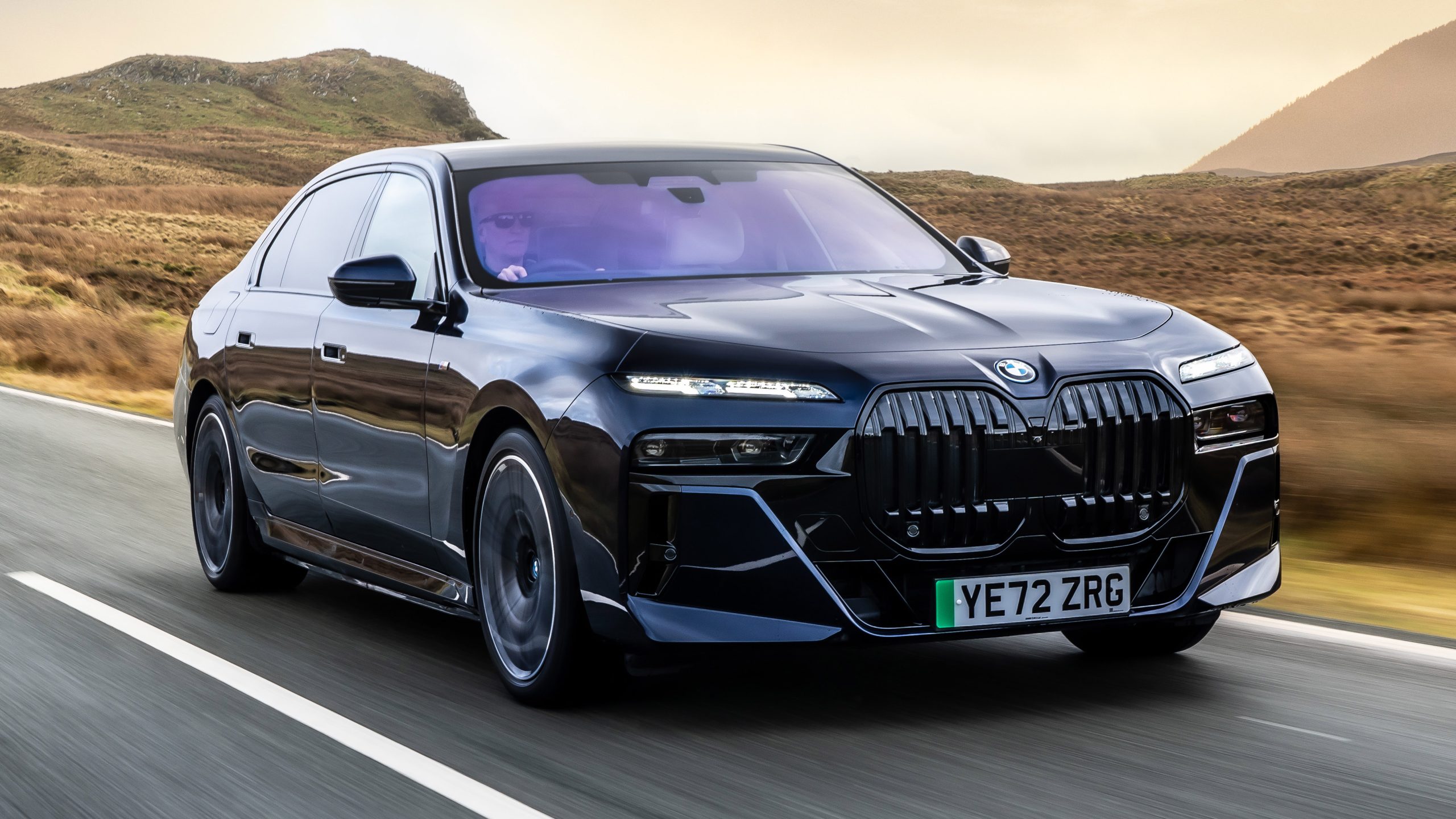
Innovative features like the iDrive infotainment system demonstrate BMW’s commitment to both technological advancement and reliability.
The system utilizes advanced artificial intelligence and machine learning algorithms to provide a sophisticated user experience while maintaining exceptional electrical system stability.
Redundant electrical pathways and sophisticated fail-safe mechanisms ensure critical functionality even if individual subsystems encounter issues.
Advanced thermal management represents another critical aspect of the 7 Series’ electrical reliability. Precision-engineered cooling and insulation techniques protect sensitive electronic modules from temperature-related stress, preventing performance degradation and extending the lifespan of electrical components.
This approach is particularly important in a vehicle with such complex electrical systems. The hybrid and electric variants of the 7 Series further showcase BMW’s electrical engineering prowess.
These models incorporate advanced battery management systems and sophisticated power distribution networks that ensure consistent electrical performance across diverse driving conditions.
The electrical systems are designed with multiple layers of redundancy, minimizing the potential for unexpected failures.
Predictive maintenance technologies are deeply integrated into the 7 Series’ electrical architecture.
The onboard diagnostic system continuously monitors electrical subsystem health, providing real-time data and early warning indicators.
This proactive approach allows for immediate detection and resolution of potential electrical complications.
Automotive experts and long-term owners consistently praise the BMW 7 Series for its electrical system dependability.
While the vehicle incorporates more advanced technologies than many competitors, its meticulous engineering ensures these systems operate with remarkable consistency and minimal complications.
6. Audi A8
The Audi A8 represents the pinnacle of German automotive electrical engineering, combining luxurious technology with exceptional system reliability.
As Audi’s flagship luxury sedan, the A8 demonstrates an extraordinary commitment to creating an electrically sophisticated yet dependable vehicle that sets new standards in the luxury automotive segment.
Audi’s electrical system design philosophy prioritizes intelligent integration and comprehensive reliability testing.
The A8 features a revolutionary electrical architecture that utilizes a sophisticated modular network of electronic control units, allowing for unprecedented system flexibility and robust performance.
Each electrical component is meticulously selected and rigorously tested to ensure maximum longevity and minimal failure potential.
The vehicle’s electrical systems showcase Audi’s technological innovation, particularly through its advanced MMI (Multi-Media Interface) system.
This cutting-edge interface combines an intuitive user experience with remarkable electrical stability. The system leverages artificial intelligence to adapt to driver preferences while maintaining exceptional system integrity across thousands of operational hours.
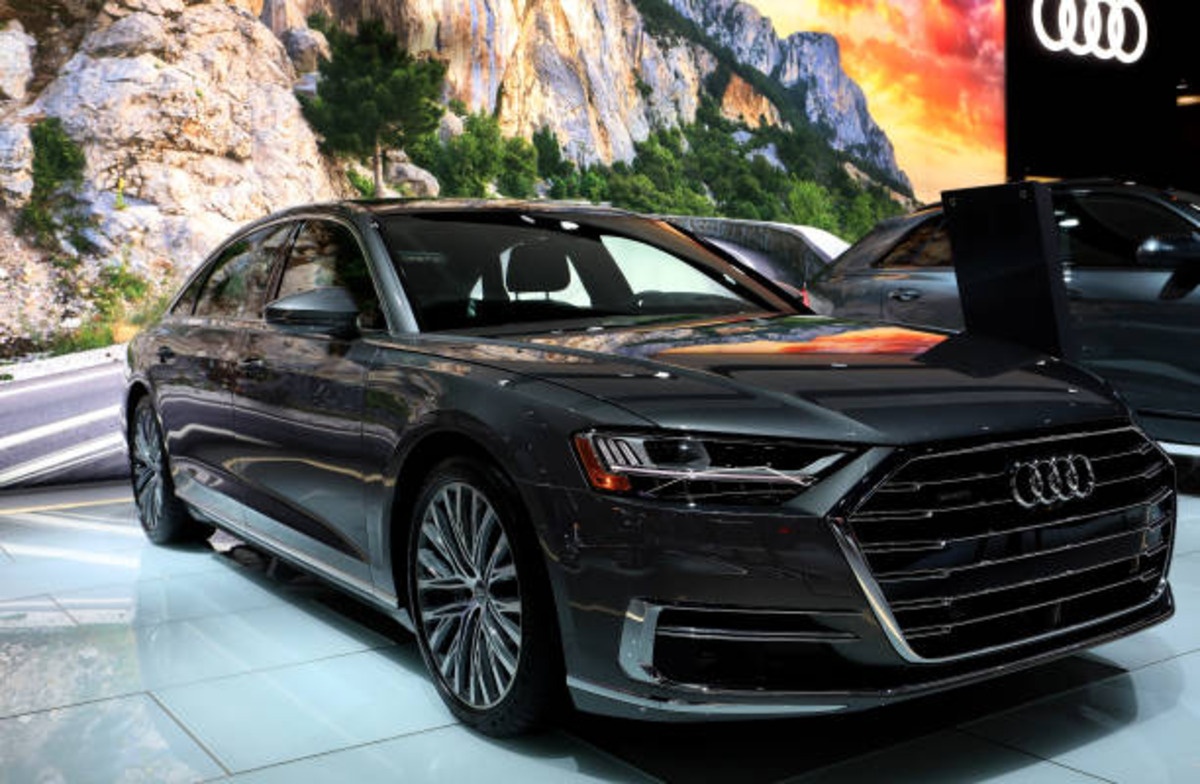
Thermal management represents a critical aspect of the A8’s electrical reliability strategy. Advanced cooling and insulation technologies protect sensitive electronic modules from temperature-related stress, preventing performance degradation and extending the operational lifespan of electrical components.
Precision-engineered heat dissipation systems ensure consistent performance across diverse environmental conditions. Audi’s commitment to electrical system reliability extends to its hybrid and electric powertrain technologies.
The A8 hybrid models feature sophisticated battery management systems that provide exceptional electrical performance and longevity. Multiple redundancy layers and advanced diagnostic capabilities ensure consistent power delivery and minimal electrical complications.
The onboard diagnostic system represents another highlight of the A8’s electrical excellence. Continuous real-time monitoring allows for immediate detection of potential electrical issues, enabling proactive maintenance before minor complications can escalate.
This predictive approach significantly reduces the likelihood of unexpected electrical failures. Advanced driver assistance systems further demonstrate the A8’s electrical engineering sophistication.
Complex sensor networks and intricate electrical subsystems work in perfect harmony, providing cutting-edge safety features while maintaining remarkable system stability. The electrical architecture supports these advanced technologies without compromising system reliability.
Consumer reports and long-term reliability studies consistently recognize the Audi A8 for its exceptional electrical system performance. Owners report minimal electrical issues, with many vehicles maintaining near-perfect functionality well beyond the standard warranty period.
7. Genesis G90
The Genesis G90 emerges as a remarkable testament to Korean automotive engineering, challenging traditional perceptions of luxury vehicle electrical reliability.
As the flagship model of Hyundai’s luxury brand, the G90 demonstrates an exceptional approach to electrical system design that combines cutting-edge technology with remarkable long-term dependability.
Genesis has approached electrical system engineering with a philosophy of meticulous simplification and robust component selection.
Unlike many luxury manufacturers that prioritize complex technological features, the G90 focuses on creating a streamlined, well-tested electrical architecture that minimizes potential failure points.
Each electrical component undergoes extensive screening and validation, ensuring only the highest-quality parts are integrated into the vehicle’s sophisticated electronic network.
The vehicle’s electrical system showcases an impressive balance between advanced functionality and reliability.
The G90’s infotainment and connectivity systems represent a pinnacle of intelligent design, featuring a user-friendly interface that maintains exceptional stability across thousands of operational hours.
Advanced integration with modern smartphones and communication technologies is achieved without compromising the electrical system’s integrity.
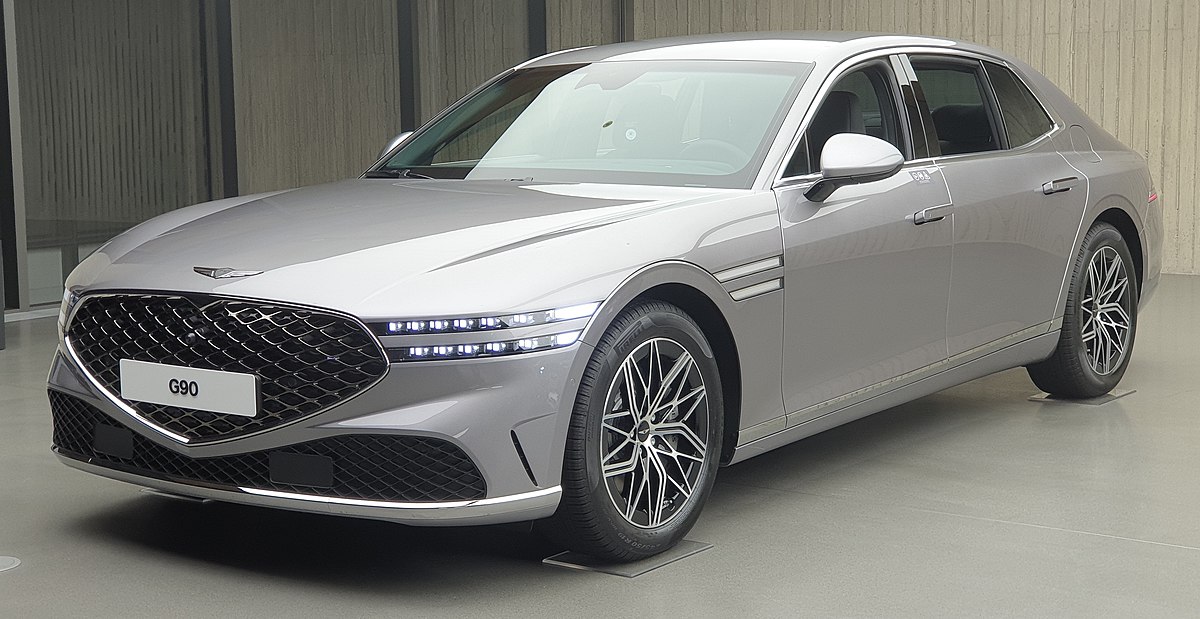
Thermal management plays a crucial role in the G90’s electrical reliability strategy. Precision-engineered cooling systems protect sensitive electronic modules from temperature-related stress, preventing performance degradation and extending the operational lifespan of electrical components.
This approach is particularly notable in a luxury sedan with such comprehensive electronic features.
Genesis has implemented an advanced diagnostic system that continuously monitors electrical subsystems.
The onboard computer provides real-time data and predictive maintenance alerts, allowing for proactive identification and resolution of potential electrical issues.
This approach significantly reduces the likelihood of unexpected failures and enhances vehicle reliability.
The electrical architecture of the G90 demonstrates remarkable sophistication in its approach to system integration.
Multiple electronic control units communicate through a high-speed data bus system, ensuring seamless interaction between various electrical subsystems. Redundancy layers are carefully implemented to provide fail-safe mechanisms that protect critical electrical functions.
Long-term ownership experiences consistently validate the G90’s electrical reliability. Consumer reports and independent reliability studies have recognized the Genesis G90 as a standout performer in electrical system dependability.
Owners report minimal electrical complications, with many vehicles maintaining exceptional performance well beyond the standard warranty period.
The vehicle’s electrical systems reflect Genesis’s broader commitment to challenging luxury automotive norms.
By prioritizing intelligent design, comprehensive testing, and quality component selection, the G90 proves that innovative electrical technologies can coexist with remarkable long-term reliability.
8. Tesla Model S
The Tesla Model S represents a revolutionary approach to electrical system design, leveraging the brand’s unique expertise in electric vehicle technology to create an unprecedented standard of electrical reliability.
As a fully electric vehicle, the Model S demonstrates how comprehensive electrical engineering can transform the automotive experience.
Tesla’s approach to electrical system design differs fundamentally from traditional automotive manufacturers.
The Model S is built from the ground up as an electrical platform, allowing for a more integrated and potentially more reliable electrical architecture.
Unlike conventional vehicles that adapt electrical systems to existing mechanical frameworks, Tesla engineers electrical components as the primary vehicle infrastructure.
The vehicle’s battery management system stands as a testament to Tesla’s electrical engineering prowess.
Advanced thermal management, sophisticated charging algorithms, and intelligent power distribution ensure exceptional long-term electrical system performance.
Multiple redundancy layers protect critical electrical functions, minimizing the potential for unexpected failures.
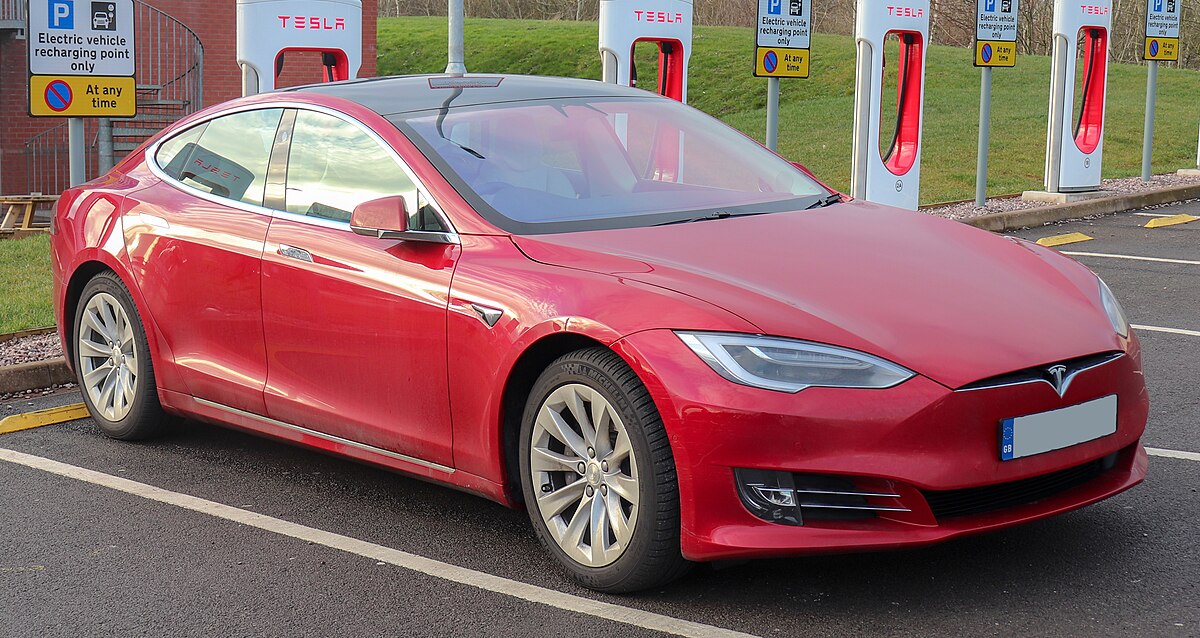
Tesla’s over-the-air software update capabilities represent another remarkable aspect of the Model S’s electrical reliability.
The vehicle can continuously improve its electrical system performance through remote updates, addressing potential issues, and introducing new features without requiring physical maintenance.
This approach allows for ongoing optimization of electrical system functionality. The onboard computer system, centered around the massive central touchscreen, showcases an extraordinary level of electrical system integration.
Unlike traditional automotive interfaces, the Model S’s computer represents a fully integrated electrical ecosystem that controls virtually every aspect of vehicle operation.
Despite this complexity, Tesla has achieved remarkable system stability and user experience consistency.
Advanced diagnostic capabilities are deeply embedded in the Model S’s electrical architecture. The vehicle continuously monitors its electrical systems, providing detailed real-time data and predictive maintenance insights.
This proactive approach allows for immediate detection and resolution of potential electrical complications.
Tesla’s vertical integration in electrical component manufacturing provides another reliability advantage.
By designing and producing critical electrical components in-house, Tesla can maintain stricter quality control and more comprehensive testing protocols compared to manufacturers relying on multiple external suppliers.
Consumer experiences and long-term studies have increasingly recognized the Tesla Model S for its electrical system reliability.
While early electric vehicles struggled with electrical complexity, Tesla has demonstrated that comprehensive electrical engineering can produce exceptionally dependable vehicles.
9. Jaguar XJ
The Jaguar XJ represents the pinnacle of British luxury automotive engineering, bringing a sophisticated approach to electrical system reliability that combines traditional craftsmanship with modern technological innovation.
As the flagship sedan of Jaguar’s lineup, the XJ demonstrates an exceptional commitment to creating an electrically advanced yet dependable luxury vehicle.
Jaguar’s electrical engineering philosophy centers on creating a refined and robust electrical architecture that supports advanced features while maintaining remarkable system stability.
The XJ features a complex network of electronic control units designed to communicate seamlessly, minimizing potential interference and failure points. This approach reflects Jaguar’s heritage of precision engineering and attention to detail.
The vehicle’s infotainment and connectivity systems showcase Jaguar’s expertise in electrical system design. The InControl Touch Pro system offers a sophisticated user interface that integrates advanced technological features with remarkable reliability.
Carefully shielded electrical components and intelligent software design ensure consistent performance across diverse operating conditions.
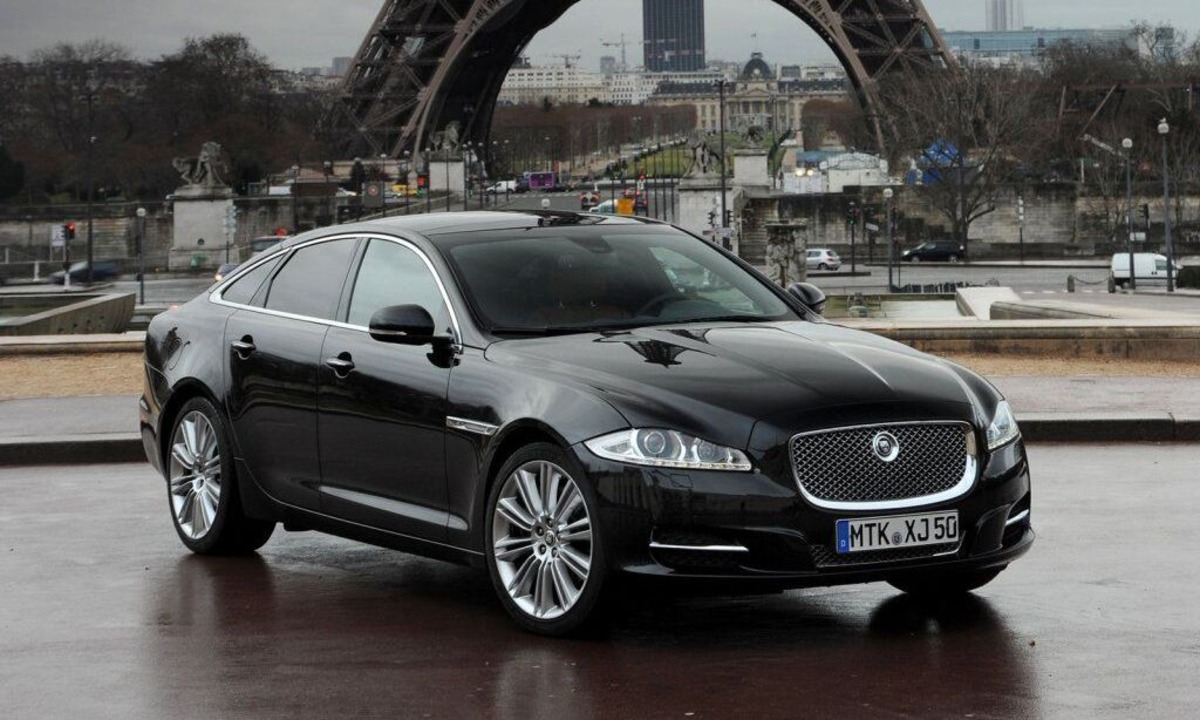
Advanced thermal management plays a critical role in the XJ’s electrical reliability strategy. Precision-engineered cooling systems protect sensitive electronic modules from temperature-related stress, preventing performance degradation and extending the operational lifespan of electrical components.
This approach is particularly important in a luxury vehicle with such comprehensive electronic features.
Jaguar has implemented an advanced diagnostic system that continuously monitors electrical subsystems.
The onboard computer provides real-time data and predictive maintenance alerts, allowing for proactive identification and resolution of potential electrical issues.
Multiple redundancy layers ensure critical electrical functions remain operational even if individual components encounter problems.
The hybrid and electric variants of the XJ further demonstrate the brand’s electrical engineering prowess.
These models incorporate sophisticated battery management systems and advanced power distribution networks that ensure consistent electrical performance across diverse driving conditions. Intelligent charging algorithms and thermal management protect the vehicle’s electrical infrastructure.
The electrical architecture supports an impressive array of advanced driver assistance systems, integrating complex sensor networks and electronic controls with remarkable stability.
These systems showcase Jaguar’s ability to implement cutting-edge technologies without compromising electrical system reliability.
Consumer reports and long-term reliability studies have increasingly recognized the Jaguar XJ for its electrical system performance.
While the vehicle incorporates advanced technological features, its meticulous engineering ensures these systems operate with consistency and minimal complications.
The XJ’s electrical systems reflect Jaguar’s broader commitment to creating luxury vehicles that combine technological innovation with exceptional reliability.
By prioritizing intelligent design, comprehensive testing, and quality component selection, the XJ proves that sophisticated electrical technologies can coexist with long-term dependability.
10. Infiniti Q70
The Infiniti Q70 emerges as a standout performer in electrical system reliability, representing Nissan’s luxury brand’s commitment to creating sophisticated yet dependable automotive technology.
As a premium sedan that bridges performance and luxury, the Q70 demonstrates an exceptional approach to electrical system design and long-term reliability.
Infiniti’s electrical engineering philosophy prioritizes intelligent integration and comprehensive reliability testing.
The Q70 features a carefully designed electrical architecture that minimizes potential failure points while maximizing system efficiency.
Each electrical component undergoes rigorous screening, ensuring only the highest-quality parts are integrated into the vehicle’s complex electronic network.
The vehicle’s infotainment and connectivity systems showcase Infiniti’s expertise in creating stable yet advanced electrical interfaces.
The InTouch system offers a sophisticated user experience that maintains remarkable consistency across thousands of operational hours.
Advanced smartphone integration and connectivity features are implemented with a focus on long-term reliability.

Thermal management represents a critical aspect of the Q70’s electrical reliability strategy. Advanced cooling and insulation technologies protect sensitive electronic modules from temperature-related stress, preventing performance degradation and extending the operational lifespan of electrical components.
Precision-engineered heat dissipation systems ensure consistent performance across diverse environmental conditions.
Infiniti has implemented an advanced diagnostic system that continuously monitors electrical subsystems.
The onboard computer provides real-time data and predictive maintenance alerts, allowing for proactive identification and resolution of potential electrical issues.
Multiple redundancy layers protect critical electrical functions, minimizing the potential for unexpected failures.
The electrical architecture of the Q70 demonstrates sophisticated system integration. Multiple electronic control units communicate through a high-speed data bus system, ensuring seamless interaction between various electrical subsystems.
This approach allows for complex functionality while maintaining system stability. Advanced driver assistance systems further highlight the Q70’s electrical engineering sophistication.
Complex sensor networks and intricate electrical subsystems work in perfect harmony, providing cutting-edge safety features while maintaining remarkable system reliability.
The electrical infrastructure supports these advanced technologies without compromising dependability.
Consumer reports and long-term reliability studies have consistently recognized the Infiniti Q70 for its electrical system performance.
Owners report minimal electrical issues, with many vehicles maintaining near-perfect functionality well beyond the standard warranty period.
The Q70’s electrical systems reflect Infiniti’s commitment to creating luxury vehicles that balance technological innovation with exceptional reliability.
By prioritizing intelligent design, comprehensive testing, and quality component selection, the Q70 proves that advanced electrical technologies can be both sophisticated and dependable.
11. Cadillac CT6
The Cadillac CT6 represents a pinnacle of American luxury automotive engineering, showcasing General Motors’ advanced approach to electrical system reliability and technological innovation.
As the flagship sedan of the Cadillac lineup, the CT6 demonstrates an exceptional commitment to creating a sophisticated yet electrically dependable luxury vehicle that challenges international competitors.
Cadillac’s electrical engineering approach centers on creating a robust and intelligent electrical architecture that supports advanced features while maintaining remarkable system stability.
The CT6 features a complex network of electronic control units designed to communicate seamlessly, minimizing potential interference and failure points. This approach reflects a meticulous approach to automotive electrical system design.
The vehicle’s Super Cruise autonomous driving technology represents a remarkable achievement in electrical system integration.
This advanced system requires an extraordinarily complex electrical infrastructure that supports real-time sensor processing, navigation, and vehicle control.
Despite the technological complexity, Cadillac has engineered these systems to maintain exceptional reliability and consistent performance.
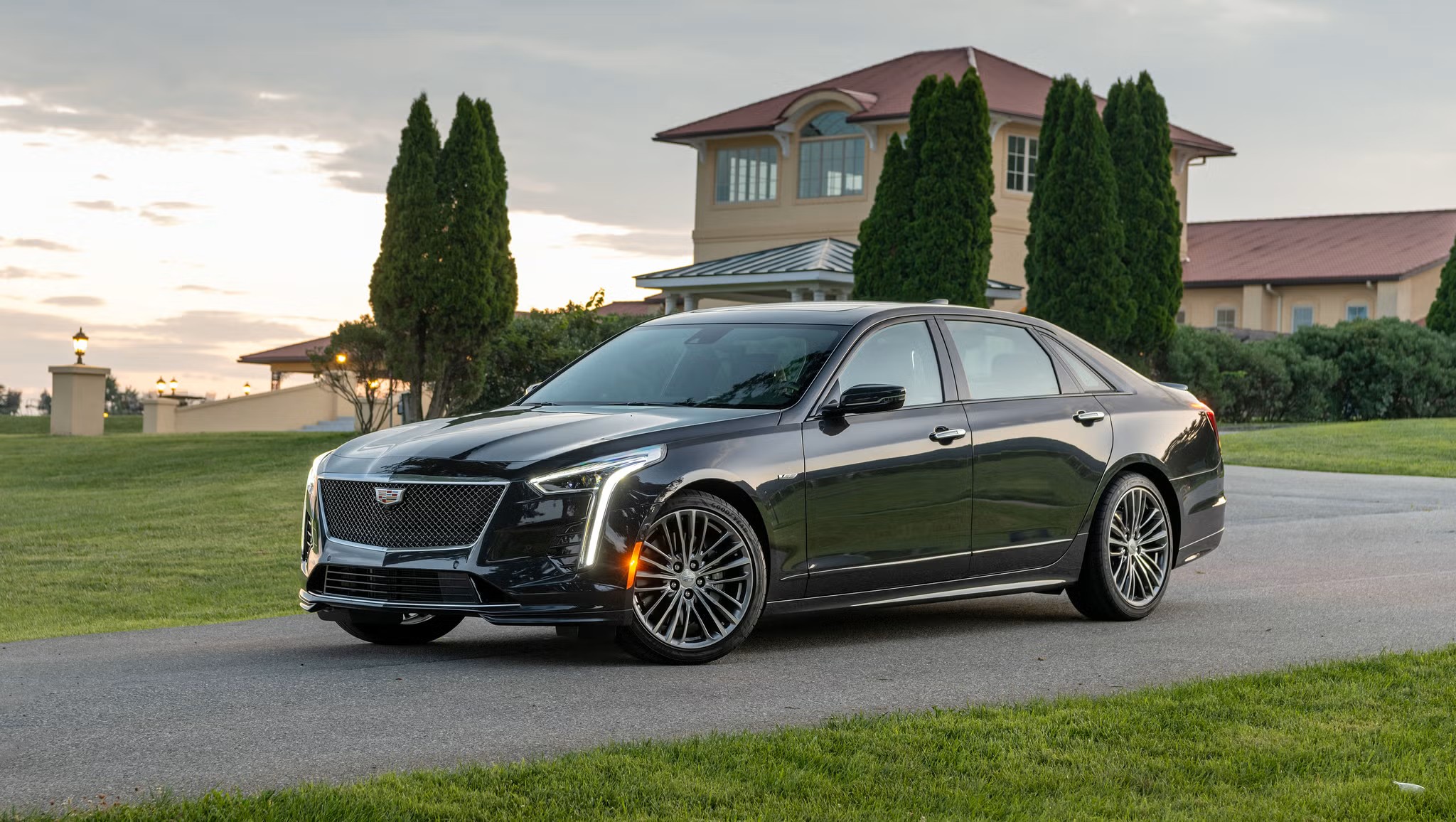
Advanced thermal management plays a critical role in the CT6’s electrical reliability strategy. Precision-engineered cooling systems protect sensitive electronic modules from temperature-related stress, preventing performance degradation and extending the operational lifespan of electrical components.
This approach is particularly crucial in a vehicle with such comprehensive electronic features. The CT6’s infotainment and connectivity systems showcase Cadillac’s expertise in creating stable yet advanced electrical interfaces.
The CUE (Cadillac User Experience) system offers a sophisticated user interface that integrates advanced technological features with remarkable consistency. Carefully shielded electrical components and intelligent software design ensure reliable performance across diverse operating conditions.
Cadillac has implemented an advanced diagnostic system that continuously monitors electrical subsystems.
The onboard computer provides real-time data and predictive maintenance alerts, allowing for proactive identification and resolution of potential electrical issues.
Multiple redundancy layers ensure critical electrical functions remain operational even if individual components encounter problems.
The hybrid variant of the CT6 further demonstrates the brand’s electrical engineering prowess.
This model incorporates sophisticated battery management systems and advanced power distribution networks that ensure consistent electrical performance across diverse driving conditions.
Intelligent charging algorithms and thermal management protect the vehicle’s electrical infrastructure.
Consumer reports and long-term reliability studies have increasingly recognized the Cadillac CT6 for its electrical system performance.
While the vehicle incorporates advanced technological features, its meticulous engineering ensures these systems operate with consistency and minimal complications.
12. Lincoln Continental
The Lincoln Continental emerges as a distinguished example of American luxury automotive electrical engineering, representing Ford’s commitment to creating a sophisticated and electrically reliable flagship sedan.
As the pinnacle of Lincoln’s luxury lineup, the Continental demonstrates an exceptional approach to electrical system design that combines advanced technology with remarkable long-term dependability.
Lincoln’s electrical engineering philosophy prioritizes intelligent integration and comprehensive reliability testing.
The Continental features a carefully designed electrical architecture that minimizes potential failure points while maximizing system efficiency.
Each electrical component undergoes rigorous screening, ensuring only the highest-quality parts are integrated into the vehicle’s complex electronic network.
The vehicle’s infotainment and connectivity systems showcase Lincoln’s expertise in creating stable yet advanced electrical interfaces.
The SYNC 3 system offers a sophisticated user experience that maintains remarkable consistency across thousands of operational hours.
Advanced smartphone integration and connectivity features are implemented with a focus on long-term reliability and user-friendly functionality.
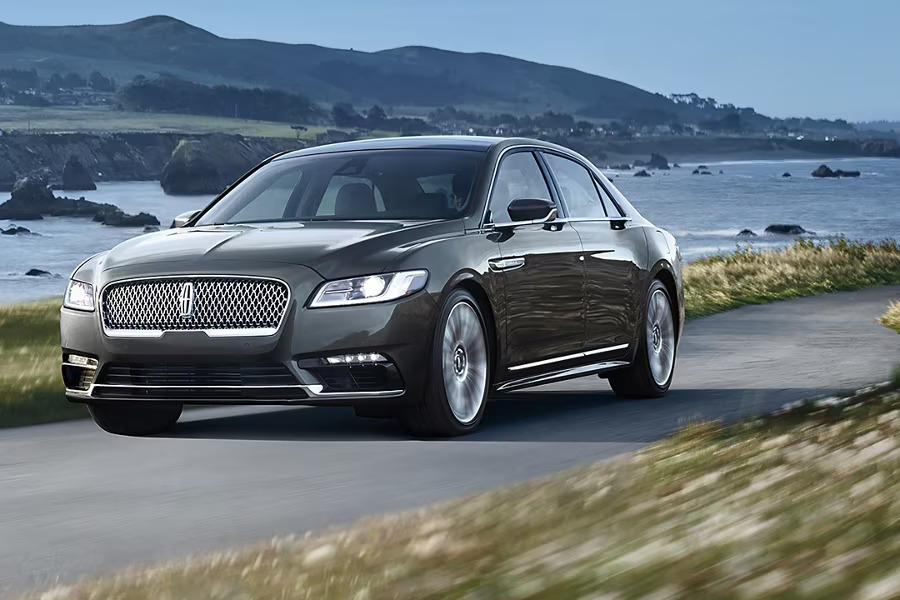
Thermal management represents a critical aspect of Continental’s electrical reliability strategy. Advanced cooling and insulation technologies protect sensitive electronic modules from temperature-related stress, preventing performance degradation and extending the operational lifespan of electrical components.
Precision-engineered heat dissipation systems ensure consistent performance across diverse environmental conditions.
Lincoln has implemented an advanced diagnostic system that continuously monitors electrical subsystems.
The onboard computer provides real-time data and predictive maintenance alerts, allowing for proactive identification and resolution of potential electrical issues.
Multiple redundancy layers protect critical electrical functions, minimizing the potential for unexpected failures.
The electrical architecture of the Continental demonstrates sophisticated system integration. Multiple electronic control units communicate through a high-speed data bus system, ensuring seamless interaction between various electrical subsystems.
This approach allows for complex functionality while maintaining system stability. Advanced driver assistance systems further highlight the Continental’s electrical engineering sophistication.
Complex sensor networks and intricate electrical subsystems work in perfect harmony, providing cutting-edge safety features while maintaining remarkable system reliability. The electrical infrastructure supports these advanced technologies without compromising dependability.
Consumer reports and long-term reliability studies have consistently recognized the Lincoln Continental for its electrical system performance.
Owners report minimal electrical issues, with many vehicles maintaining near-perfect functionality well beyond the standard warranty period.
Also Read: 10 Turbocharged Engines That Outlive Most Vehicles

